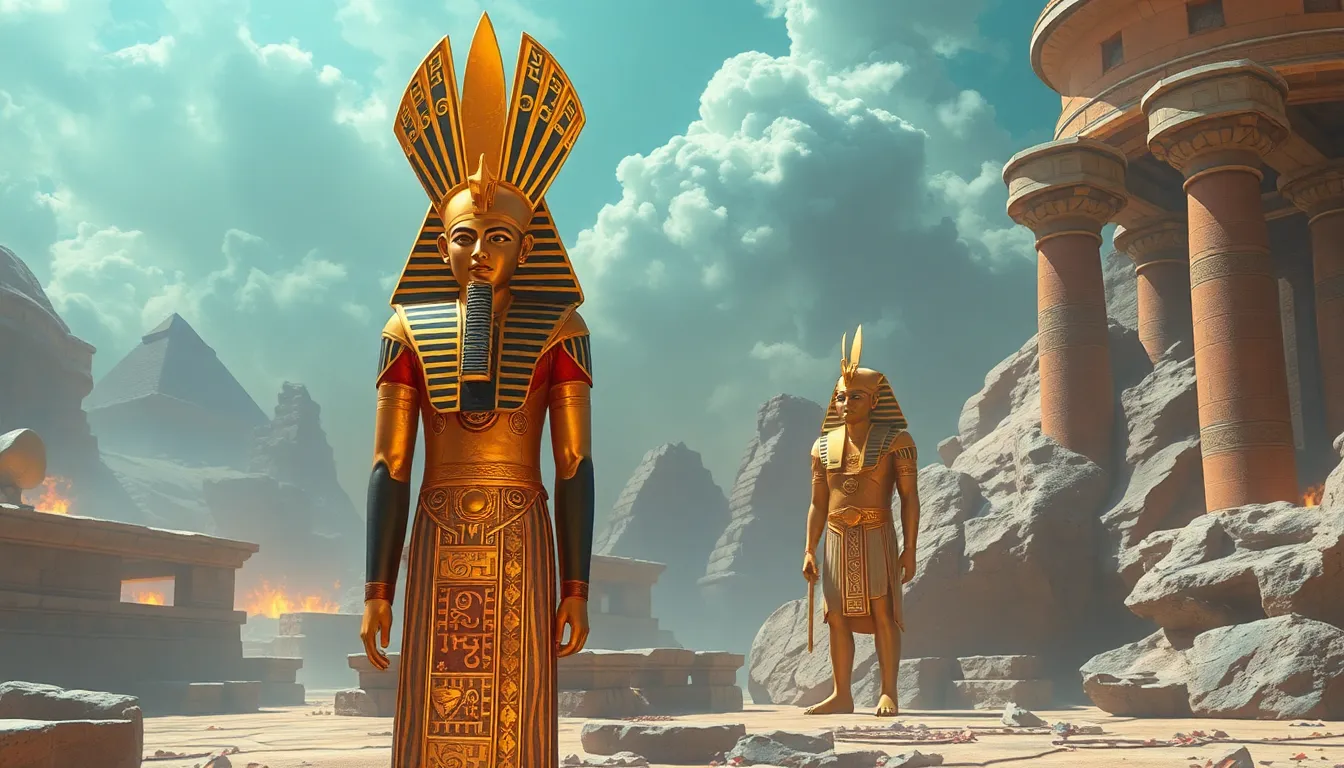The Myths of Amun: The Hidden One Revealed
I. Introduction to Amun: The Hidden One
Amun is one of the most significant deities in ancient Egyptian mythology, revered as a creator god and a protector of the pharaohs. Known as “The Hidden One,” Amun embodies the mystery and the unseen forces of the universe. His worship transcended the boundaries of time and space, influencing various aspects of Egyptian life and spirituality.
II. Historical Background of Amun
The origins of Amun can be traced back to the early dynastic period of Egypt, where he was initially worshipped as a local god of Thebes. As the political landscape of Egypt changed, so did the prominence of Amun. His status rose significantly during the New Kingdom when he became a central figure in the Theban triad, alongside Mut and Khonsu.
- Early Worship: Amun was first recognized in the city of Karnak, where a temple was dedicated to him.
- Theban Triad: With the rise of Thebes, Amun was merged with other gods, enriching his character and influence.
- Pharaohs and Amun: Many pharaohs adopted titles that included Amun’s name, signifying his importance in legitimizing their rule.
III. Amun’s Attributes and Symbols
Amun is often depicted with distinct attributes that symbolize his divine nature and power. His appearance is typically characterized by:
- Ram-Headed: Amun is commonly shown as a ram or as a man with a ram’s head, signifying strength and virility.
- The Color Blue: Amun is associated with the color blue, representing the sky and the primordial waters of creation.
- Feather: The feather of Ma’at is frequently depicted with Amun, symbolizing truth and justice.
These symbols not only highlight Amun’s power but also his connection to creation and the cosmos.
IV. Myths and Legends Surrounding Amun
Amun appears in various myths throughout ancient Egyptian texts, often as a central figure in creation myths and solar associations. Key aspects of these myths include:
- Creation Myths: Amun is often associated with the creation of the universe, emerging from the primordial chaos to create the world.
- Association with the Sun: Amun is linked to the sun god Ra, particularly in the combined form of Amun-Ra, representing the hidden and revealed aspects of divinity.
In these narratives, Amun serves as a protector of the pharaohs, guiding them through their reign and into the afterlife.
V. Amun in Art and Iconography
Amun’s representation in art and iconography is abundant throughout ancient Egyptian temples and tombs. His imagery reflects not only his divine qualities but also the reverence in which he was held. Key examples include:
- Karnak Temple: The grand temple dedicated to Amun in Thebes features numerous statues and reliefs depicting him in various forms.
- Wall Reliefs: Artworks often illustrate Amun in the company of pharaohs, emphasizing his role as a divine protector.
- Amulets: Amun’s symbols were used in amulets, offering protection and blessings to the wearer.
VI. The Duality of Amun: Hidden and Revealed
Amun embodies a dual nature as both hidden and revealed. This duality is significant in understanding his worship and the religious practices surrounding him. The hidden aspect signifies the concealed forces of creation and existence, while the revealed aspect represents his presence in the world. This dichotomy is crucial in:
- Ritual Practices: Rituals often sought to invoke Amun’s hidden nature to gain insight and power.
- Philosophical Interpretations: Ancient Egyptian thought often embraced the idea of hidden truths, which Amun personified.
VII. Amun’s Influence on Other Deities and Cultures
Amun’s influence extended beyond his own worship, integrating with other deities and impacting neighboring cultures. Notable integrations include:
- Amun-Ra: The fusion of Amun with Ra created a powerful solar deity that underscored the importance of the sun in Egyptian cosmology.
- Influence on Greek and Roman Deities: Amun’s characteristics were adopted by Hellenistic cultures, where he was associated with gods such as Zeus and Jupiter.
- Cultural Exchange: Amun’s worship spread to other cultures, influencing their religious practices and beliefs.
VIII. Conclusion: The Legacy of Amun
The legacy of Amun remains profound in modern spirituality and culture. His myths provide insight into ancient Egyptian cosmology and the complexities of divine representation. Understanding Amun’s significance helps contemporary audiences appreciate the depth of ancient beliefs and their influence on modern religious practices.
In conclusion, Amun, “The Hidden One,” stands as a testament to the enduring power of myth and the human quest for understanding the divine. His story, rich in symbolism and meaning, continues to resonate, reminding us of the importance of exploring our cultural heritage.




